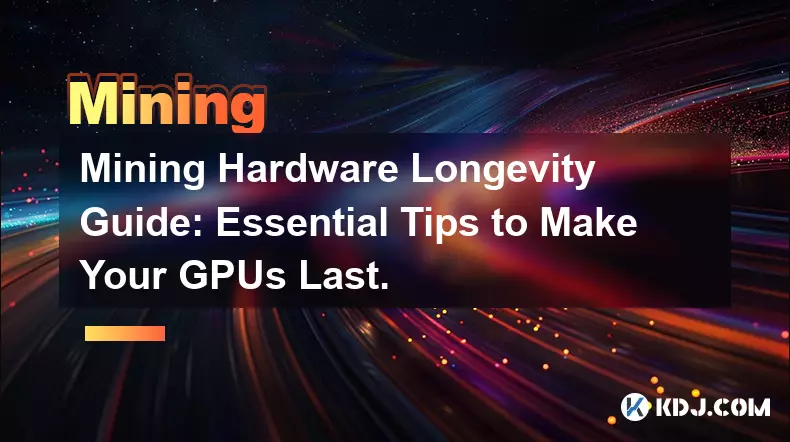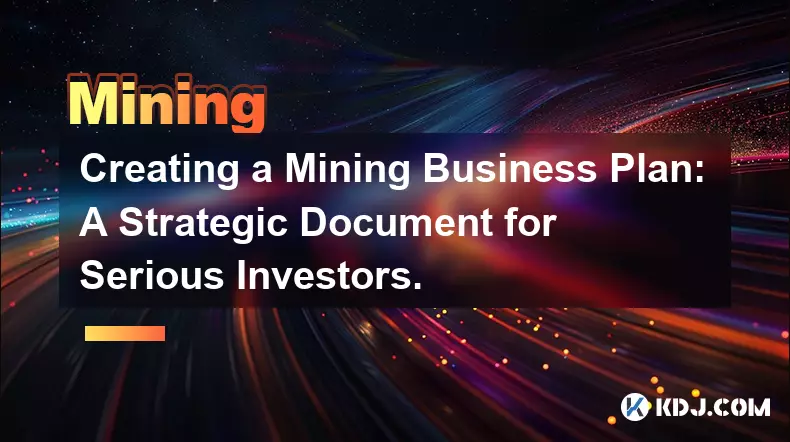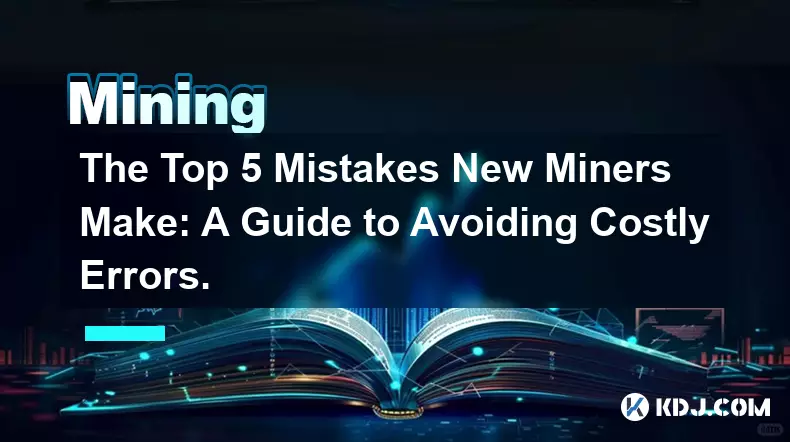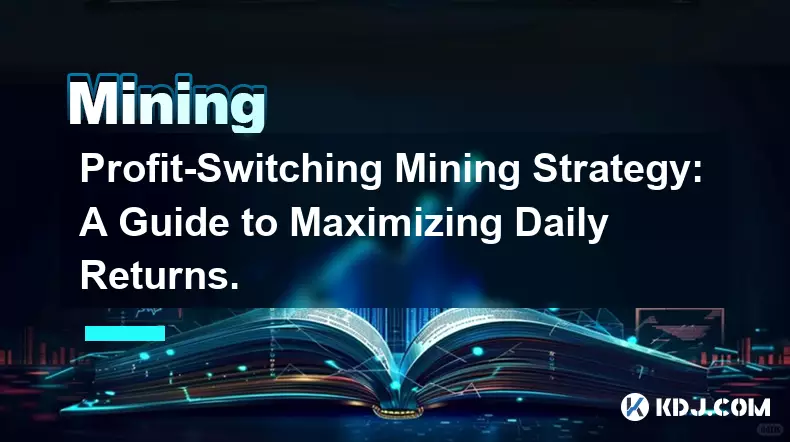-
 bitcoin
bitcoin $99177.955738 USD
-7.32% -
 ethereum
ethereum $3187.183061 USD
-12.38% -
 tether
tether $0.999809 USD
0.00% -
 xrp
xrp $2.117933 USD
-9.42% -
 bnb
bnb $906.710033 USD
-9.17% -
 solana
solana $149.367737 USD
-10.74% -
 usd-coin
usd-coin $0.999816 USD
0.01% -
 tron
tron $0.281498 USD
-0.38% -
 dogecoin
dogecoin $0.156292 USD
-8.00% -
 cardano
cardano $0.500744 USD
-10.19% -
 hyperliquid
hyperliquid $38.087358 USD
-4.58% -
 chainlink
chainlink $14.097831 USD
-8.54% -
 bitcoin-cash
bitcoin-cash $463.329916 USD
-9.22% -
 ethena-usde
ethena-usde $0.999078 USD
-0.01% -
 unus-sed-leo
unus-sed-leo $9.475862 USD
-0.79%
What is a mining pool and how to join one?
A mining pool combines miners' computational power to boost block discovery chances and ensure steady rewards, though it raises centralization concerns.
Nov 02, 2025 at 05:55 am

What Is a Mining Pool in the Cryptocurrency Ecosystem
1. A mining pool is a collective group of cryptocurrency miners who combine their computational resources to increase the probability of successfully mining a block on a blockchain network. By pooling hash power, participants improve their chances of earning block rewards, which are then distributed according to each member’s contributed processing power.
2. In decentralized networks like Bitcoin, solving complex cryptographic puzzles requires substantial computing effort. As difficulty levels rise, individual miners face diminishing returns. Mining pools mitigate this challenge by aggregating processing capacity across numerous participants, ensuring more consistent payouts over time.
3. Each pool operates under specific reward distribution models such as Pay-Per-Share (PPS), Proportional, or PPLNS (Pay Per Last N Shares). These systems determine how earnings are allocated based on contribution and risk tolerance, influencing which pool miners choose to join.
4. Mining pools play a critical role in maintaining network stability and transaction validation speed. Without them, smaller miners would rarely earn rewards, potentially leading to centralization among only the most powerful operators.
5. While pools enhance profitability for individual participants, they also raise concerns about centralization risks. If a single pool controls more than 50% of a network's hash rate, it could theoretically execute a 51% attack, compromising transaction integrity.
Steps to Join a Mining Pool
1. Before joining any pool, ensure your mining hardware—such as ASICs or GPUs—is compatible with the cryptocurrency you intend to mine. For example, Bitcoin mining requires SHA-256–capable ASICs, while Ethereum Classic may still support GPU-based setups.
2. Research and select a reputable mining pool that aligns with your goals. Factors to consider include uptime reliability, fee structure, payout frequency, server locations, and transparency in operations. Popular options include F2Pool, Slush Pool, and Antpool.
3. Create an account on the chosen pool’s website. Some pools require registration, while others allow immediate connection using a worker setup via wallet address. Follow the instructions provided in the pool’s documentation.
4. Configure your mining software with the pool’s server address, port number, and your unique worker credentials. Common tools like CGMiner, BFGMiner, or NiceHash will prompt for these details during setup.
5. Begin mining and monitor performance through the pool’s dashboard. Most platforms provide real-time statistics including hash rate, accepted/rejected shares, estimated earnings, and recent payouts.
Key Considerations When Choosing a Mining Pool
1. Evaluate the pool’s historical uptime and technical infrastructure. Frequent downtimes can result in lost mining opportunities and reduced income, especially in highly competitive environments.
2. Review the fee model carefully. Most pools charge between 1% and 3% of earnings as service fees. Some apply additional charges for PPS+ or advanced features, so understanding all costs is essential.
3. Assess geographic proximity to pool servers. Lower latency connections reduce stale share rates—those submissions rejected due to delays—which directly impacts efficiency and profitability.
4. Check community reputation and security practices. Look for audits, two-factor authentication support, and clear communication channels. Avoid pools with unresolved complaints or opaque ownership structures.
5. Understand the reward system mechanics. PPLNS favors loyal miners who stay online consistently, whereas PPS offers stable income but higher operator risk and fees.
Frequently Asked Questions
How are mining rewards distributed among pool members?Rewards are allocated based on the number of valid shares each miner submits relative to the total pool output. The exact formula depends on the reward method—PPS pays per submitted share regardless of block success, while PPLNS calculates payouts based on recent share contributions when a block is found.
Can I switch mining pools without losing my earnings?Yes, miners can change pools at any time. Any accumulated balance not yet paid out will be forfeited unless withdrawn before disconnecting. It’s crucial to withdraw funds regularly and update mining configurations accordingly after switching.
Do mining pools control the transactions included in blocks?While pools decide which transactions to include from the mempool, they typically follow standard relay policies set by the broader network. Miners do not have individual influence over transaction selection unless operating independently at large scale.
Is solo mining still viable compared to joining a pool?For most individuals, solo mining is impractical due to extremely low odds of finding blocks without massive hash power. Pools offer predictable returns suited to small-scale operators, whereas solo mining suits entities with access to industrial-grade facilities and patience for irregular payouts.
Disclaimer:info@kdj.com
The information provided is not trading advice. kdj.com does not assume any responsibility for any investments made based on the information provided in this article. Cryptocurrencies are highly volatile and it is highly recommended that you invest with caution after thorough research!
If you believe that the content used on this website infringes your copyright, please contact us immediately (info@kdj.com) and we will delete it promptly.
- Nano (XNO) Ignites: Volume Spike and Price Jump Signals Comeback?
- 2025-11-05 14:50:11
- Bitcoin's Bear Signal: Is a Collapse Incoming?
- 2025-11-05 14:40:15
- Nick Szabo, Bitcoin Future, and BTC: Navigating the Crypto Landscape in 2025
- 2025-11-05 14:50:01
- Bitcoin's Wild Ride: Saylor, Kiyosaki, and the Quest for $200K
- 2025-11-05 10:50:13
- Culex, Cardano, and Aster: A Crypto Cocktail of Mosquitoes, Dips, and CZ Fuel
- 2025-11-05 11:00:17
- Crypto Presales, Coin Growth, and Established Coins: Navigating the 2025 Buzz
- 2025-11-05 11:00:17
Related knowledge

Mining Hardware Longevity Guide: Essential Tips to Make Your GPUs Last.
Nov 01,2025 at 04:00pm
Mining Hardware Longevity Guide: Essential Tips to Make Your GPUs LastAs cryptocurrency mining continues to attract both hobbyists and professionals, ...

Creating a Mining Business Plan: A Strategic Document for Serious Investors.
Nov 04,2025 at 08:54pm
Defining the Core Objectives of a Cryptocurrency Mining Venture1. Establishing a clear mission for the mining operation ensures alignment with investo...

The Top 5 Mistakes New Miners Make: A Guide to Avoiding Costly Errors.
Nov 01,2025 at 10:18am
The Top 5 Mistakes New Miners Make: A Guide to Avoiding Costly Errors Entering the world of cryptocurrency mining can be both exciting and overwhelmin...

The Miner's Guide to Market Cycles: When to Hold and When to Sell.
Nov 03,2025 at 07:55pm
The Miner's Guide to Market Cycles: When to Hold and When to Sell Bitcoin mining has evolved from a hobbyist pursuit into a highly competitive, capita...

Profit-Switching Mining Strategy: A Guide to Maximizing Daily Returns.
Nov 03,2025 at 11:55am
Understanding Profit-Switching in Cryptocurrency Mining1. Profit-switching is a dynamic mining strategy that automatically redirects computational pow...

Setting Up Mining Alerts: A Guide to Monitoring Your Rigs 24/7.
Nov 03,2025 at 02:54pm
Why Continuous Monitoring Is Crucial in Cryptocurrency Mining1. Cryptocurrency mining operations rely heavily on hardware stability and network connec...

Mining Hardware Longevity Guide: Essential Tips to Make Your GPUs Last.
Nov 01,2025 at 04:00pm
Mining Hardware Longevity Guide: Essential Tips to Make Your GPUs LastAs cryptocurrency mining continues to attract both hobbyists and professionals, ...

Creating a Mining Business Plan: A Strategic Document for Serious Investors.
Nov 04,2025 at 08:54pm
Defining the Core Objectives of a Cryptocurrency Mining Venture1. Establishing a clear mission for the mining operation ensures alignment with investo...

The Top 5 Mistakes New Miners Make: A Guide to Avoiding Costly Errors.
Nov 01,2025 at 10:18am
The Top 5 Mistakes New Miners Make: A Guide to Avoiding Costly Errors Entering the world of cryptocurrency mining can be both exciting and overwhelmin...

The Miner's Guide to Market Cycles: When to Hold and When to Sell.
Nov 03,2025 at 07:55pm
The Miner's Guide to Market Cycles: When to Hold and When to Sell Bitcoin mining has evolved from a hobbyist pursuit into a highly competitive, capita...

Profit-Switching Mining Strategy: A Guide to Maximizing Daily Returns.
Nov 03,2025 at 11:55am
Understanding Profit-Switching in Cryptocurrency Mining1. Profit-switching is a dynamic mining strategy that automatically redirects computational pow...

Setting Up Mining Alerts: A Guide to Monitoring Your Rigs 24/7.
Nov 03,2025 at 02:54pm
Why Continuous Monitoring Is Crucial in Cryptocurrency Mining1. Cryptocurrency mining operations rely heavily on hardware stability and network connec...
See all articles










































































